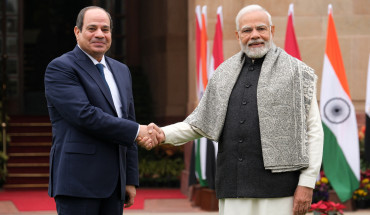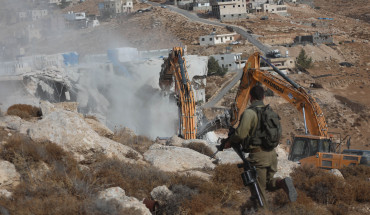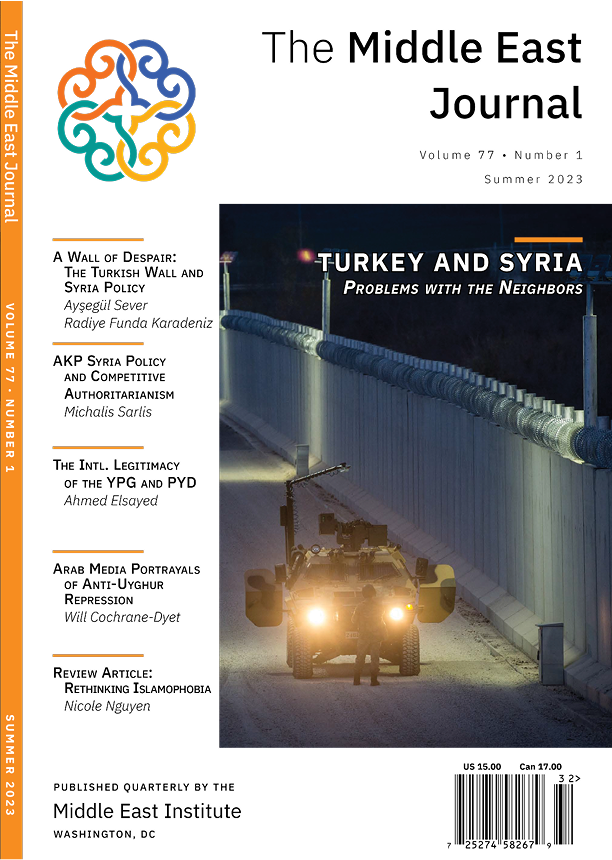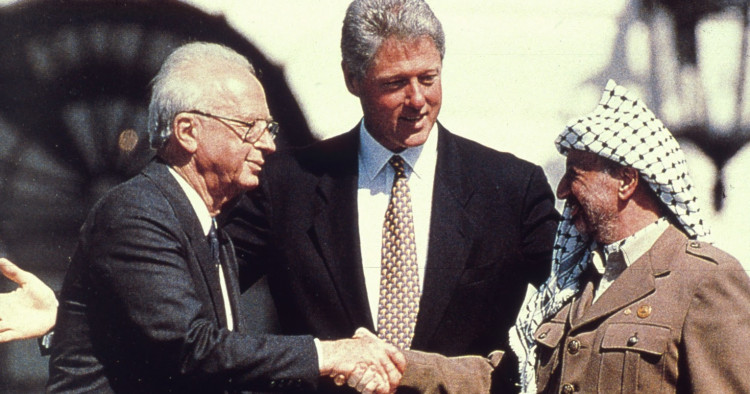It has been 30 years since Israeli Prime Minister Yitzhak Rabin and Palestine Liberation Organization (PLO) chairman Yasir Arafat, flanked by a beaming President Bill Clinton, signed the historic Oslo “declaration of principles” on the White House lawn, ushering in a new era of Palestinian-Israeli peacemaking dominated by the United States. Oslo called for a five-year interim period of Palestinian self-rule, at the end of which all core issues of the conflict, including Jerusalem, Palestinian refugees, Israeli settlements, and final borders, would be resolved. Although the various Oslo accords did not specify the goal of an independent Palestinian state, the two-state solution has been the stated goal of the U.S.-led Oslo peace process since 2000. The Oslo framework continues to define virtually all aspects of Israeli-Palestinian relations as well as America’s and the broader international community’s approach to the peace process.
Yet Oslo’s extraordinary longevity stands not as a testament to its utility but to its unmitigated and ongoing failure. Three decades after that famous handshake between Arafat and Rabin, both peace and the stated goal of an independent Palestinian state are more distant than ever; Israel’s occupation and illegal settlements are more deeply entrenched, while Palestinian political and governing institutions remain divided and dysfunctional. Moreover, not only is the outdated Oslo framework too detached from reality to serve as a credible pathway to peace, it is part and parcel of the regime of indefinite Israeli occupation and Palestinian subjugation.
A legacy of failure
Oslo established pockets of Palestinian autonomy in parts of the West Bank and Gaza Strip, though overriding security and physical control remained in Israeli hands. While the hope was that Israel would gradually cede more land and control to the newly created Palestinian Authority (PA), the process was effectively frozen in 1998. Since then, the PA has operated in roughly 39 percent of the West Bank, though Israeli army incursions remain a regular occurrence. The other 61 percent, much of it slated as land reserves for future settlement expansion, remains under exclusive Israeli civil and military control and largely off limits to Palestinian use and development.
The process was to be completed by May 1999, but repeated delays, renegotiations, and outright lack of implementation of various agreements, along with regular outbreaks of violence and years of on-and-off negotiations, effectively transformed Oslo’s “interim” arrangements into permanent realities. Moreover, Oslo was not one process but two — combining traditional conflict-resolution between two parties with a process of “state-building” for the Palestinians. Among other things, this meant that outside actors, including the United States, foreign donors, and even Israel, now had a direct say in — and in some cases an effective veto over — key aspects of Palestinian political life.
The Oslo process was premised on the notion that incremental progress on smaller-scale, “day-to-day” issues, like security cooperation and improved economic conditions, would help build confidence between the parties and enable them to tackle the more difficult, core issues of the conflict further down the road. The theory was that improved security for Israelis would allow Israel’s leaders to take “risks for peace,” including handing over territory to Palestinians and other concessions. Likewise, economic aid to Palestinians would help dry up support for Palestinian militants while transforming their leaders into genuine peace partners. The only problem with this approach, however, was that it never worked — and it is doubtful it ever could. By focusing on reassuring Israelis and reforming Palestinians, the Oslo process ignored the basic drivers of the conflict, namely Israel’s ongoing military occupation, colonization, and denial of Palestinian rights.
While there was plenty of blame to go around, Oslo’s failures ultimately hinged on several structural factors. First and foremost was the uniquely asymmetrical power and political dynamics that existed not just between Israelis and Palestinians, as occupier and occupied, but also between the United States and the Palestinians given the centrality of the U.S.-Israel special relationship. As the two most powerful actors in the process, American and Israeli decision-makers had both the incentive and the wherewithal to shift as many of the political risks and costs onto the Palestinians as possible. This was especially true in times of crisis, such as the collapse of the Camp David summit and subsequent outbreak of the al-Aqsa Intifada in late 2000. Although all sides had contributed to the failure of negotiations and the escalating violence, it was far easier and less costly for Clinton to lay the blame solely at the feet of the Palestinians — a pattern that would be repeated again and again.
Meanwhile, U.S. policymakers routinely shifted the goal posts in Israel’s favor. Well before the Trump administration sought to formally legitimize Israeli settlements while doing away with United Nations Security Council Resolution 242, which embodied the “land for peace” formula that had underpinned U.S. policy and all Arab-Israeli negotiations since 1967, previous administrations had already begun the process of eroding the established ground rules of the peace process. Despite their rhetorical opposition to Israeli settlements as a hindrance to peace, successive U.S. administrations from both parties found ways to accommodate Israeli settlement expansion by carving out exemptions for “natural growth,” East Jerusalem, the large settlement blocs, and other pretexts.
Similarly, while previous administrations did not deny the existence of Israel’s occupation, as Donald Trump did, they routinely downplayed its centrality to the conflict by focusing on secondary issues such as security, economics, and institution-building. This was largely due to the vast power asymmetry between the two sides but was also “baked” into the Oslo process, which focused as much — and often more — on transforming Palestinian politics and institutions as it did on altering the dysfunctional dynamics between Israelis and Palestinians. Among the most prominent example of this was the “Roadmap,” the internationally backed peace plan put forward by the United States, European Union, United Nations, and Russia at the height of the al-Aqsa Intifada, in 2003. Despite laying out parallel obligations for both sides, to which Israel strongly objected, the Roadmap was ultimately subverted and effectively transformed into a tool of conditionality and a blueprint for “reforming” Palestinian politics.
All of these highlight an even more central failing of Oslo, which was the absence of mutual accountability. Even as both the White House and Congress remained vigilant in holding Palestinian leaders to account for a range of transgressions, real and imagined, from incitement to support for terrorism, U.S. policymakers steadfastly avoided any meaningful accountability for Israeli violations — whether settlement expansion, the killing of civilians, or other problematic actions.
As a result, the process was totally disconnected from realities on the ground. In contrast to Oslo’s central dogma, periods of improved security for Israelis and enhanced governance for Palestinians did not generate progress toward Palestinian statehood or make Israeli leaders more willing to compromise. Rather the opposite was true. In times of relative calm, Israel (and its U.S. ally) had no incentive to depart from the status quo and, in times of violence, no will. Palestinian compliance brought no rewards, just as Israeli abuses and excesses carried no consequences.
Whatever Oslo may have offered in the 1990s, it is far too outdated, imbalanced, and disconnected from current realities to be of any value today, either as a way to resolve the conflict or even the more modest goal of managing it. Expecting the Oslo framework to bring peace is like attempting to use Windows 95 on modern-day computers, and where the only “software” update ever introduced — the 2003 Roadmap — was deleted before it could even be installed. Nearly a decade after the last U.S.-sponsored negotiations, conditions on the ground continue to deteriorate thanks to accelerated Israeli settlement expansion, expulsions, violence by the Israeli army and settlers, as well as increased attacks by Palestinians on Israeli civilians.
The latest surge in West Bank violence, the deadliest in two decades, at once highlights a central failing of the Oslo framework and the dangers of relying on a nonexistent peace process. Whereas the primary role of PA-Israel security cooperation is to prevent attacks on Israelis, soldiers as well as civilians, there is no provision or mechanisms in place to protect the lives and properties of Palestinians from violence by Israeli soldiers or settlers, which often go hand-in-hand. Meanwhile, U.S.-sponsored security summits last spring underscored the futility of pursuing “de-escalation” in the absence of either a political horizon or mechanisms of implementation. No sooner had an agreement been reached, it was summarily and embarrassingly disavowed by key ministers in the Netanyahu government.

A one-state reality
Meanwhile, current trends point to the inexorable demise of the two-state solution. Having lost most of its international donor aid along with its domestic legitimacy, the PA today is in a state of slow-motion collapse. Years of political division and stagnation, including the debilitating 15-year split with Hamas, along with the PA’s growing corruption and authoritarianism, have destroyed its domestic credibility, even as its physical presence on the ground has begun to shrink. Amid ongoing violence in the northern West Bank, PA security forces have largely ceded control to armed militant groups intent on carrying out attacks on Israeli soldiers and settlers. Meanwhile, ordinary Palestinians have come to see the PA as a liability, and for the first time ever, a majority in the occupied territories now supports its dissolution.
The failings of the peace process and the PA stand in stark contrast to the enormous success of Israel’s ever-expanding settlement enterprise, which now dominates both the physical and political landscape of the West Bank. Since the start of the Oslo process, Israel’s settler population has soared from roughly 270,000 in 1993 to over 700,000 today. Moreover, decades of de facto “creeping” annexation have given way to formal, de jure annexation following the decision by Israel’s far-right government to transfer key powers over the West Bank from Israeli military to civilian authorities.
Perhaps more critically, the precarious consensus surrounding the two-state solution within Israeli, Palestinian, and American politics has steadily come apart. This is particularly true in Israel, where even before the current ultra-nationalist coalition came to power, right-wing parties opposed to Palestinian statehood dominated the Knesset and successive governments for most of the last two decades. But it is also true for growing numbers of Palestinians in the occupied territories. Although the Palestinian leadership remains firmly committed to the goal of two states, public support for an independent state in the West Bank and Gaza historically has dropped to 27 percent, its lowest since the signing of Oslo in 1993, with more and more Palestinians abandoning the goal of an independent state in favor of a struggle for equal rights in a single state.
The picture in Washington is equally grim. Whereas support for two states was once a matter of bipartisan consensus, the Republican Party has formally expunged references to two states from its party platform, while rejecting “the false notion that Israel is an occupier.” Though most Democrats remain committed to the goal of two states, the Biden administration has been largely indifferent. In stark contrast to its vigorous pursuit of Saudi-Israeli normalization, the Biden administration has made clear in both word and deed that it does not intend to invest significant political capital in either the Palestinians or an Israeli-Palestinian settlement. In addition to downgrading a two-state solution, the current administration also no longer considers it a U.S. “vital national security interest”: President Joe Biden has effectively preserved key aspects of Trump’s legacy, including the reversal of longstanding State Department policy on the illegality of Israeli settlements and the abandonment of Resolution 242.
Regional trends are working against the goal of a negotiated two-state solution as well. Along with scaling back their financial assistance to the Palestinians, Arab Gulf states are divesting from the issue politically and diplomatically. The Abraham Accords, which saw the United Arab Emirates and Bahrain, and later Morocco, sign normalization agreements with Israel, are a sign that Arab regimes have largely moved on from both the Palestinian issue and a two-state solution — even if Arab publics have not.
The likely demise of a two-state solution and the consolidation of a highly unequal one-state reality, while most damaging for Palestinians, also raises difficult and unavoidable questions for Israel and its supporters. There is already an emerging consensus among international human rights groups, including Amnesty International and Human Rights Watch, as well as Israeli organizations that the current reality is one of apartheid. While several Israeli politicians, including Ehud Barak, Tzipi Livni, and others, have long warned of such an outcome in the event a two-state solution becomes impossible, a few have concluded that day has already come. “In a territory where two people are judged under two legal systems, that is an apartheid state,” observed former Mossad chief Tamir Pardo. While reasonable people may disagree over whether Israeli actions meet the technical definition of apartheid, there is no denying the grossly unequal, unjust, and unsustainable reality that exists today.
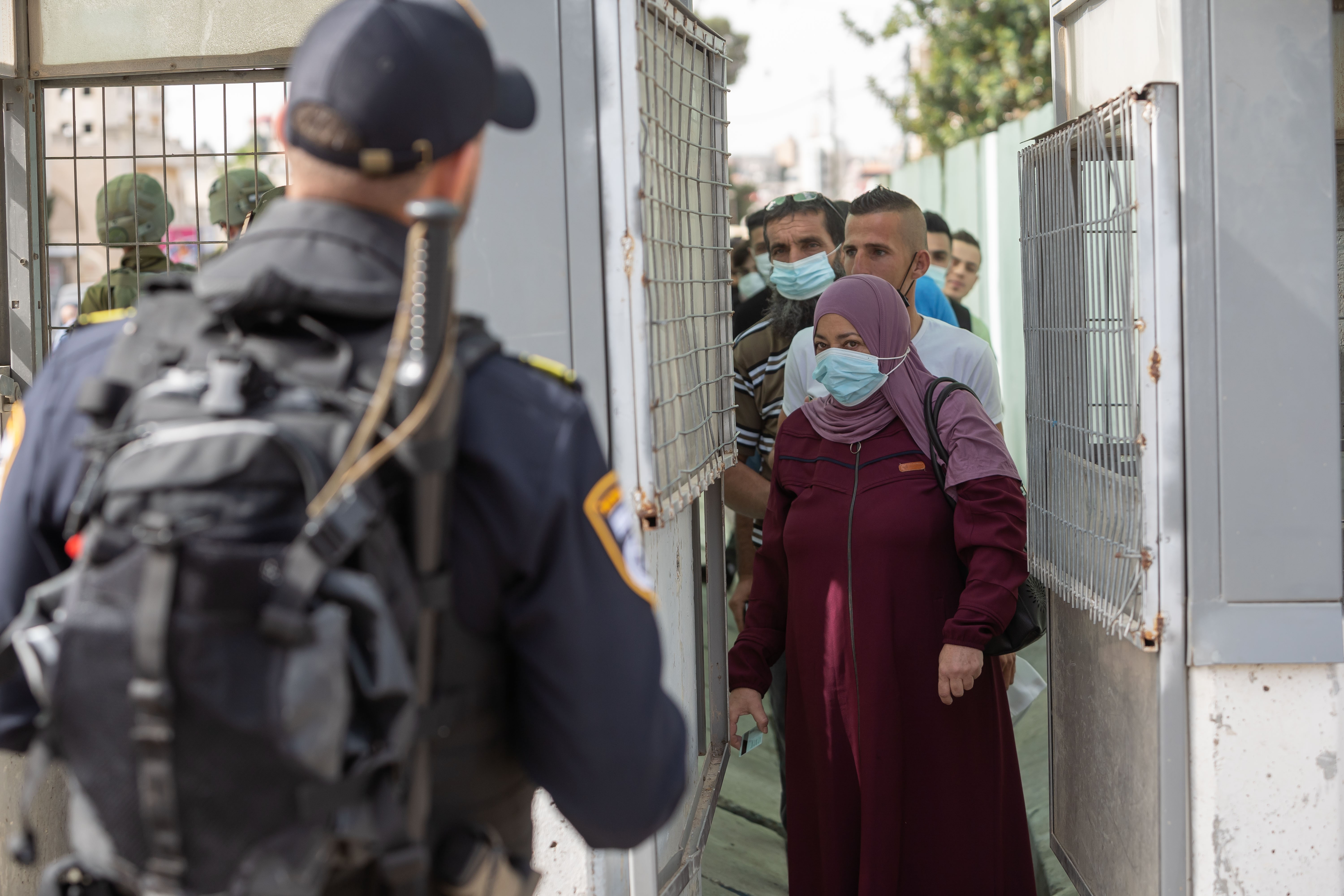
A post-Oslo future?
Dispensing with the Oslo framework does not necessarily mean dismantling existing structures like the PA or even the goal of two states — at least not until they can be responsibly replaced — though it will require a fundamental shift in mindset and priorities on the part of the U.S., the EU, and other stakeholders. Instead of focusing on an imagined future two-state solution, the focus should be on confronting the actual one-state reality that exists today, including ways to prevent further violence, dispossession, and other abuses. This will also require reaffirming and re-centering the basic principles of international law, including the U.N. Charter and Resolution 242, as well as the right of both Palestinians and Israelis to live in peace, security, and freedom. Finally, while a non-Oslo pathway to two states may still exist, the time has come to consider alternative approaches, such as the possibility of a single state with equal rights for all or hybrid scenarios like confederation, however imperfect or improbable they may seem. After all, it was not so long ago that the idea of a Palestinian state alongside Israel was dismissed as political heresy. Absent such new thinking, we are effectively condemning the parties, particularly the Palestinians, to prolonged turmoil and suffering.
Khaled Elgindy is a senior fellow at the Middle East Institute and the director of its Program on Palestine and Israeli-Palestinian Affairs. He is the author of the 2019 book, Blind Spot: America and the Palestinians, from Balfour to Trump.
Photo: MPI/Getty Images
The Middle East Institute (MEI) is an independent, non-partisan, non-for-profit, educational organization. It does not engage in advocacy and its scholars’ opinions are their own. MEI welcomes financial donations, but retains sole editorial control over its work and its publications reflect only the authors’ views. For a listing of MEI donors, please click here.






